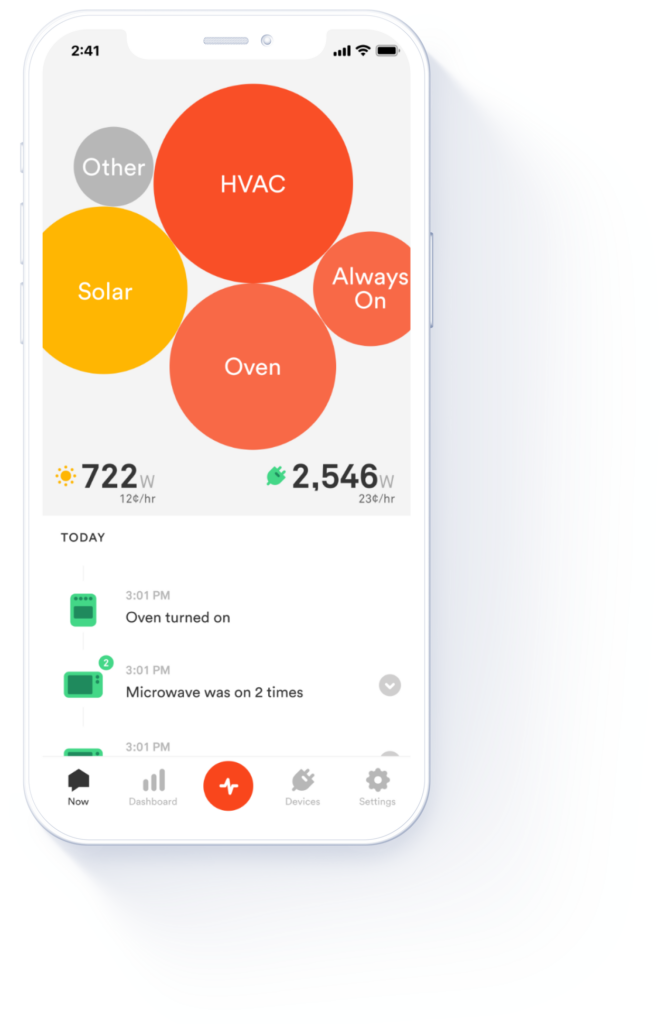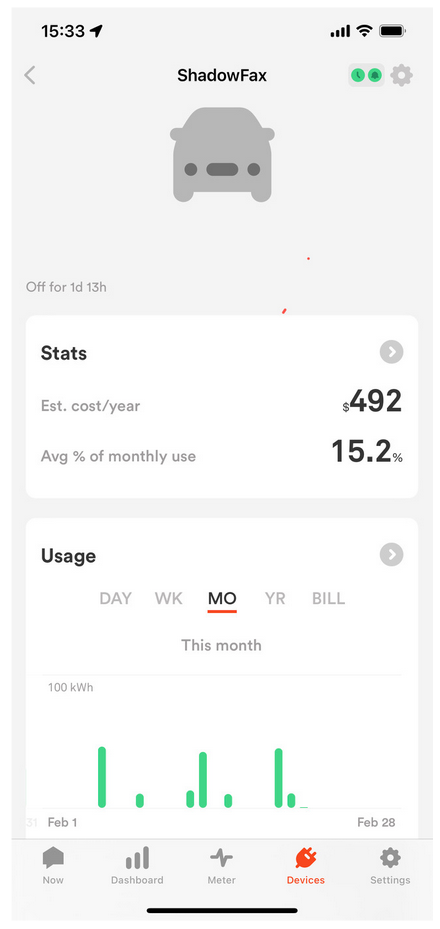Understanding where your carbon emissions come from is an essential component of reducing your carbon footprint. A home energy monitor can help you track exactly how much electricity you are using.
While your utility bill can give you a rough estimate of how much electricity your home uses in the aggregate, it’s difficult to pinpoint exactly where this electricity is being used, simply by reading your bill.
Between vampire energy and running multiple appliances at once, finding ways to reduce your energy consumption without valuable data is like throwing something at the wall and seeing if it sticks.
Certainly, many smart home devices can monitor their individual usage, but not everyone has a smart home.
Fortunately, home energy monitors offer a robust way to monitor your home’s energy usage down to the individual circuit and appliance.
Learn about the benefits of a home energy monitor and how it can help you achieve The Clean Energy Life.
A home energy monitor tracks the amount of electricity used in your home.
There are three types of home energy monitors:
Most home energy monitors come with sensors that attach to the wires that run between your panel and circuits to monitor all of the electrical use in your home.
Advanced whole-home energy monitors use machine learning technology to track the unique electrical signals from each electronic device in your home to track their usage.
Some smart home electricity monitors like the Sense may hook up to your WiFi or Bluetooth to provide real-time information or usage reports, available on your smartphone.
Let’s explore some of the benefits of a whole-home energy monitor to see if it is worth investing in for your home.
According to some experts, a home energy monitor can save the average household nearly 10% annually on their utility bills. And the more sophisticated the device, the greater the savings.
The science is fairly simple: by understanding where the bulk of your energy usage comes from, you can identify ways to reduce your consumption over time.
We have found that simple fixes, such as limiting usage or unplugging something when not in use, can lead to real savings.
Real-time data and cost monitoring show you how much money you spend every second on each of your devices. This data provides extra incentive to enact energy reduction strategies that allow you to see the cost savings compound over time visibly.
This feature is indispensable for those who like to budget their monthly costs. For example, I was able to see how much money it cost to charge my EV so I could compare the annual cost of charging my car with the annual cost it would take to fuel it with gasoline–the numbers are astonishing!


Whole-home monitors allow you to remotely monitor all of your devices straight from your smartphone or tablet, so that you can program alerts anytime something exceeds your intended demand.
Finally, many devices we have researched and tested, including Sense Solar, allow you to track how much energy your solar panels generate. This useful feature has enabled me to balance my energy demand with my solar production to become almost completely grid-independent and reduce my energy costs almost down to $0 monthly.
Based on our research and experiences, yes, home energy monitors are worth it, especially for those who are transitioning to The Clean Energy Life.
Not only do these home electricity monitors help us track the individual consumption of each of our devices, but they also provide real-time alerts and data to act instantly to reduce our consumption.
Tack on the solar capabilities of top-brand devices, and these are indispensable tools for reducing our energy consumption and going completely renewable.
The only argument against home energy monitors is that creating a smart home with multiple devices could make the addition of these devices unnecessary. However, these devices can be an affordable alternative for anyone without a smart home system and give us the data we need to act now to reduce our carbon footprint.
There are many home energy monitors available, but it’s important to keep the following features in mind when purchasing a new one.
Energy and home electricity monitoring devices can range in simplicity from a “plug-load” monitor that monitors your entire electric consumption from a single outlet, or you can get more granular with circuit-level monitoring using a device like the Sense.
The latter will be able to track individual power consumption from plugged-in devices, while the former can only track the aggregate consumption of all of your devices.
We suggest home energy monitors with machine-learning technology that can identify the individual devices in your electrical network. This feature will allow you to track each device across your home without purchasing individual, device-level monitors.
While most monitors should be compatible with any smartphone or tablet, be sure to check each device’s compatibility just to be sure.
Choose a monitor that provides real-time monitoring available on your smartphone so you can get a better idea of what devices are consuming the most electricity.
If you have solar panels attached to your home, I recommend purchasing a device like the Sense Solar to track its production. The data you will gather will be really crucial in your push toward grid independence and going 100% renewable.
Finally, you need to ensure the cost is low enough to justify your purchase.
Most home energy monitors will cost between $150-$400 for a whole-home monitor with machine learning technology. However, if they save you 10% or more annually, one of these devices can pay for itself in 1-2 years.
Ultimately, home energy monitors are a great way to make your home more energy efficient and also reduce your carbon footprint. Be sure to check out our article on smart home devices that can compound your savings by reducing your energy usage and upgrade the comfort of your home.
Please note: This page contains affiliate links. If you choose to purchase after clicking a link The Clean Energy Life may receive a commission at no extra cost to you. We only link to products we know and we use ourselves.
Driving the clean energy movement one step at a time and making a positive impact on the environment.
The Clean Energy Life is part of the Rewire Group and is a companion site to Rewire Energy, and Rewire Digital.
Website Copyright 2023, Rewire Group LLC, DBA – The Clean Energy Life, All rights reserved.
Website Hosting and design by Rampant Imaginations